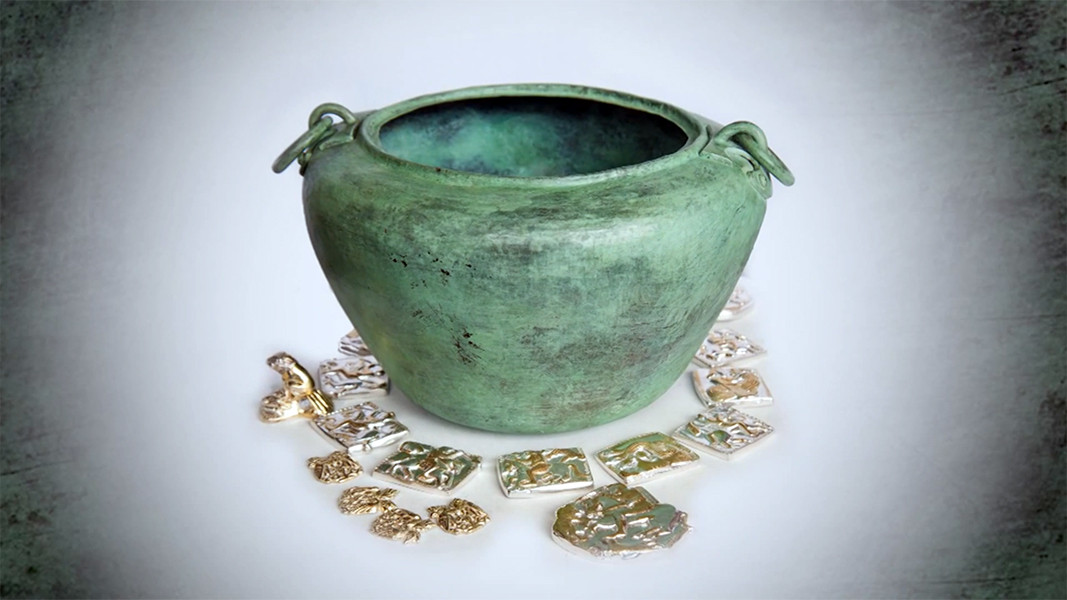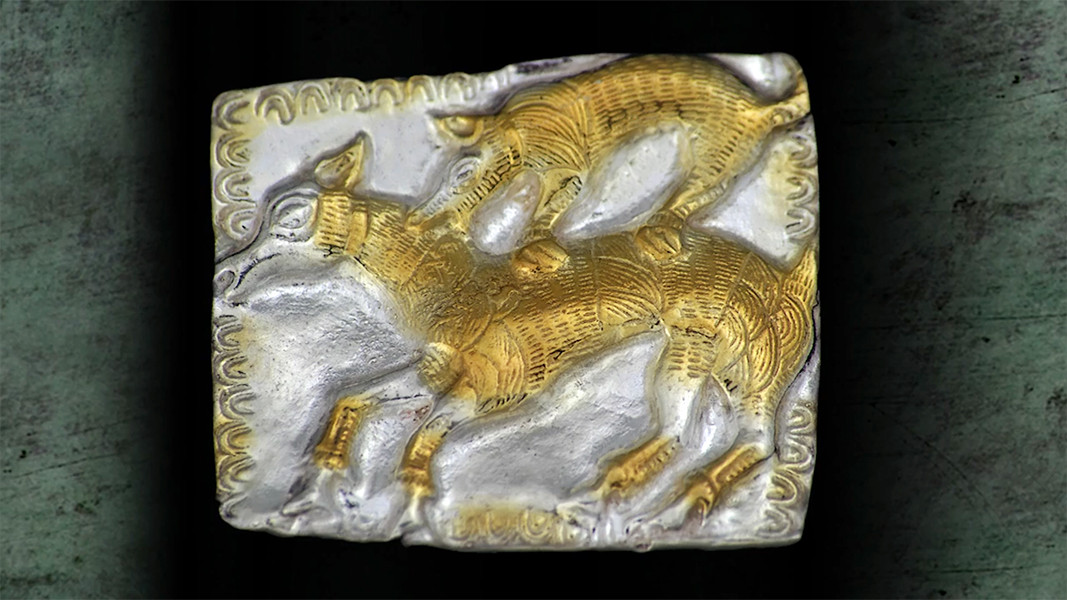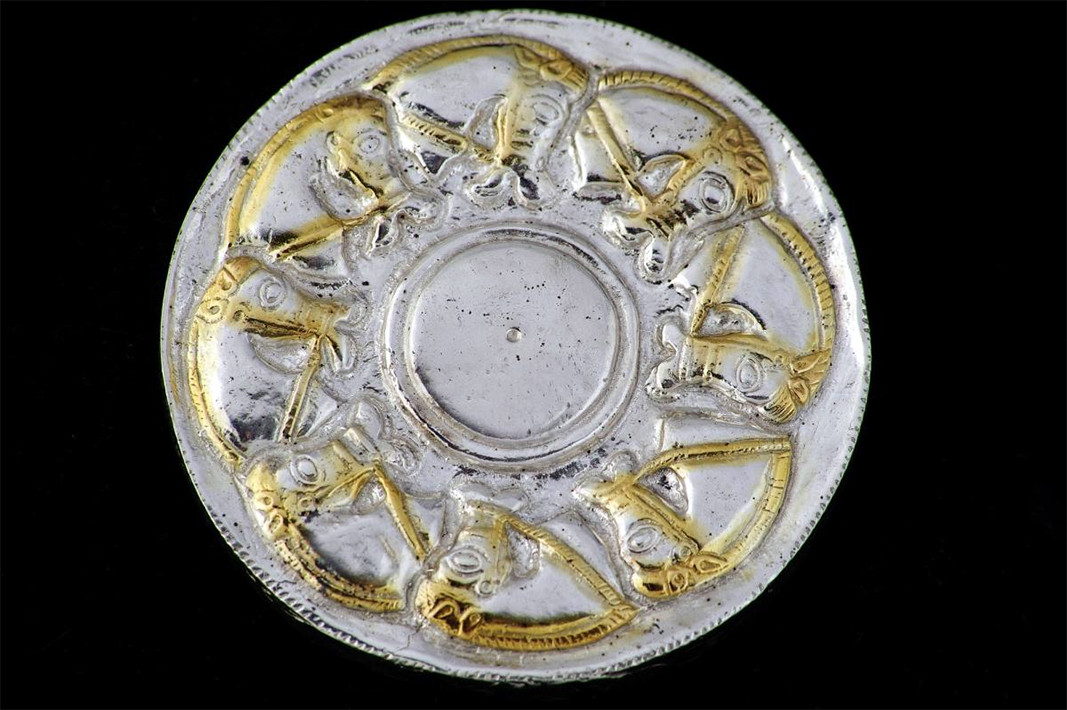In the world of the Thracians, who had no written language, the most important messages were conveyed through art. The Letnitsa Treasure is precisely such a message — about power, beliefs, and the path to wisdom. This unique discovery, dated between 385 and 335 BC, consists of 23 appliqués made of silver and gilded silver, which were part of horse harnesses, including a bridle and a breastplate. It is believed that the finely crafted decorations were the work of two masters — a Thracian and a Greek — who worked during the reign of the Odrysian king Cotys I in the 4th century BC.

The story of how this ancient message has reached us is no less captivating. On a seemingly ordinary day in 1964, workers near the village of Letnitsa in the Lovech region were digging at a depth of just half a meter when they struck something solid. It was a bronze vessel, turned upside down, and inside it lay one of the most significant finds in Thracian archaeology.

The legends surrounding the treasure — its looting and the subsequent collection by local authorities and villagers — resemble the plot of a movie. Radoslav Gushterakliev, Chief Curator at the Regional Historical Museum-Lovech, has more:
''The treasure was accidentally discovered in the vicinity of the village, now the town of Letnitsa. During excavation work at a depth of 50–60 cm, workers came across a bronze vessel. The vessel was quickly removed, and its contents were spilled onto the ground and looted. Thanks to the local authorities and Pavel Pavlov, an archaeologist from the Lovech Museum, with the help of Letnitsa residents Ivan Vasilev and Dr. Georgi Nikolov, the discovered items were collected and placed at the antique collection of the Regional Historical Museum in Lovech. Various stories always exist, sometimes even with a mythical touch, of treasures discovered by chance in the Lovech region or elsewhere in the country. Of course, there are also legends of people who may have kept some of the finds for themselves'', says Radoslav Gushterakliev.

The ancient ornaments depict Thracian horsemen in full battle gear. There are also dramatic scenes of animal combat — two fighting bears, a wolf attacking a deer, and a griffin grappling with a lion.

But these are not just beautiful decorations. For the Thracians, who had no written language, these images were the only way to convey their beliefs and highlight the importance of the aristocracy. As Radoslav Gushterakliev himself points out, through gold and silver the Thracians communicated something important with the aim of commanding the respect of the people. And how do we, people of the 21st century, interpret these messages?

''The most important thing we learn is the system of governance in the diverse ancient Thrace during this period. These appliqués illustrate the path that a Thracian aristocrat was expected to follow. He had to gradually acquire certain knowledge through trials, initiations, and rituals in order to achieve perfection. This path symbolizes the preparation of a ruler to govern his land. One of the appliqués, a round piece depicting eight horse heads chasing each other, suggests that this cycle lasted eight years. During this time, the aristocrat undergoes various tests and rituals to learn how to wage war and protect his country. By the end of this journey, he reaches the state of the ‘silent one’, initiated into the secret of power and wisdom'', Radoslav Gushterakliev went on to say.

Once it was collected and preserved, the Letnitsa Treasure began its journey around the world, serving as a true ambassador of our millennia-old heritage
''It has been exhibited on different continents – Europe, Asia and America. In 2023–2024 it was shown in the United States, in Los Angeles, and later in North Macedonia. In 2015, it was also exhibited at the Louvre in Paris. When it is not traveling, the treasure can be seen at the National Historical Museum in Sofia, where every detail of the gold and silver reveals the wisdom of the Thracians'', Radoslav Gushterakliev said.
Read also:
Published and translated by Kostadin AtanasovPhotos: Regional Historical Museum-Lovech; letnitsa.bg, bulgarianheritage.bulgariana.eu
On November 21, the day of the Presentation of Virgin Mary (or the Entry of the most Holy Theotokos into the Temple), the Orthodox Bulgarians also celebrate the Day of the Christian Family and the Learning Youth. The holiday was established by the..
During a visit by the Radio Bulgaria team to the Bulgarian Orthodox Parish "Nativity of the Mother of God" in Geneva, we had the pleasure of meeting Ventseslav Sabev, the son of long-time church history professor at the Sofia Theological Seminary,..
On November 15, 1910, Russian pilot Boris Maslenikov carried out the first airplane flight in Bulgaria. He took off in a Farman-type aircraft from an improvised airfield near Sofia. In the days that followed, several more demonstration flights were..
On November 21, the day of the Presentation of Virgin Mary (or the Entry of the most Holy Theotokos into the Temple), the Orthodox Bulgarians also celebrate..

+359 2 9336 661
